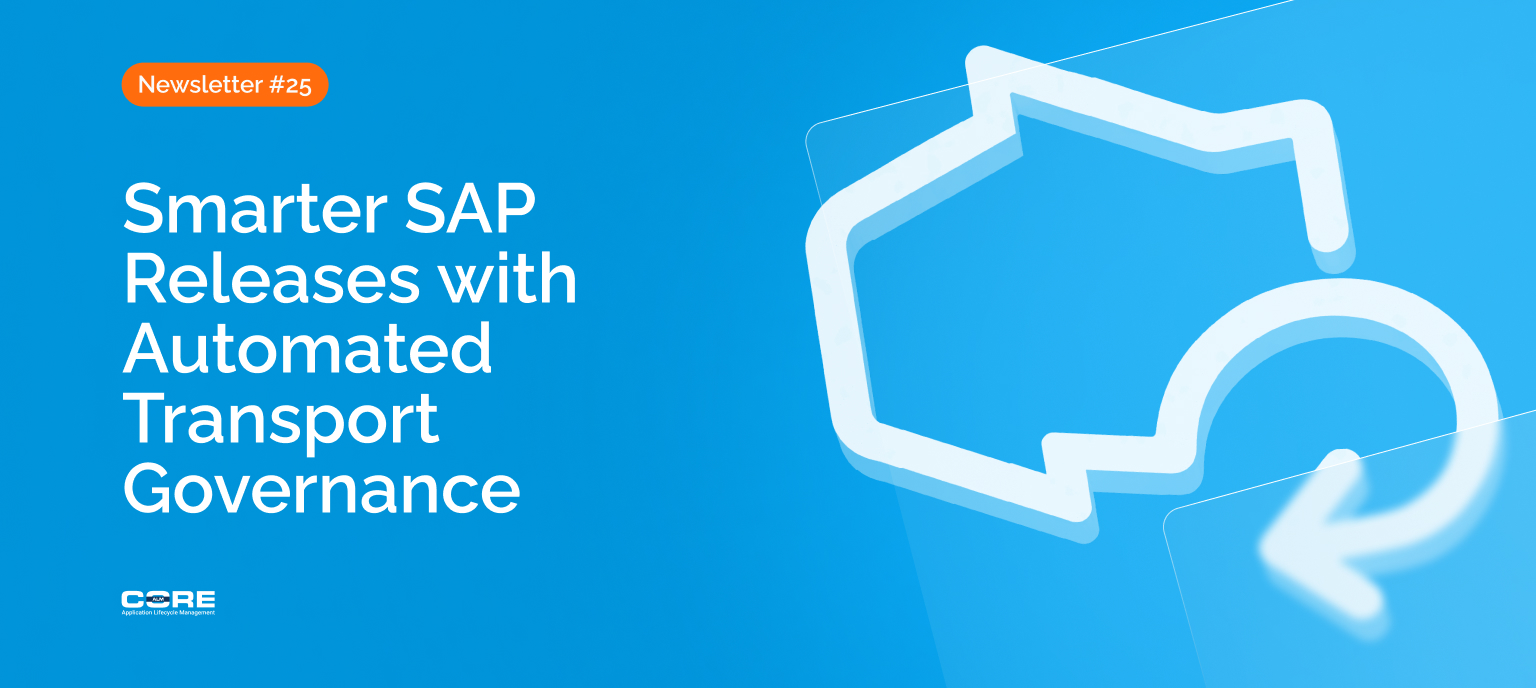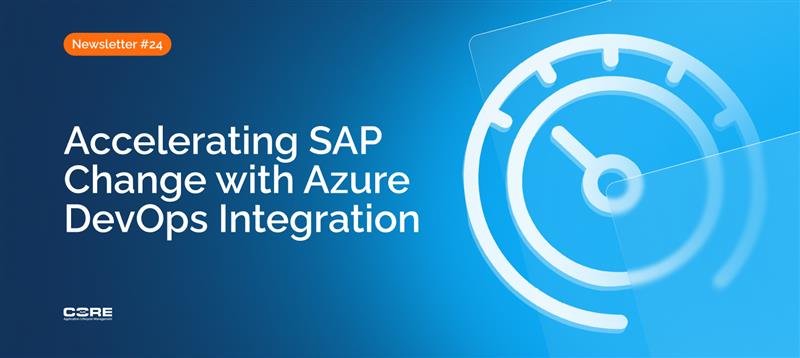Accelerate Your SAP Implementation with SAP Cloud ALM and Tricentis

Accelerate Your Design Phase
Leverage SAP Best Practices Content
Designing your SAP implementation can be a daunting task, but using the SAP Best Practices content available in SAP Cloud ALM can significantly streamline this phase:
- Business Processes Documents: SAP Best Practices provide documentation of business processes, which serves as a starting point for business process design.
- Flow Diagrams: SAP Best Practices also include visual flow diagrams to help to illustrate the standard SAP business processes, making it easier to understand and communicate project needs to your team and stakeholders. These diagrams can be updated during your design phase based on your specific needs.
- Test Cases: Pre-defined test cases from SAP Best Practices allow you to hit the ground running. These test cases are designed to validate the standard business processes quickly, reducing the time spent on preparing test data and scenarios from scratch.
By leveraging these resources available in SAP Cloud ALM, you can accelerate the design phase, ensuring that your project starts on a solid foundation.
Build SAP Changes Faster
Define Success Criteria Up-Front
One of the keys to fast and efficient build phases is setting clear success criteria from the outset. Here’s how you can achieve this:
- Create Requirements and Define Acceptance Criteria: Engage stakeholders early to document all requirements and map them to appropriate business processes. For each requirement, define acceptance criteria that are clear, measurable, and agreed upon by all stakeholders. For example, if a requirement involves a new report, the acceptance criteria might include specific data points that should be included in the report and the performance metrics it should meet.
- Early Alignment, Continuous Validation, and Governance: Ensure that all project phases are aligned with these requirements and criteria. Regular check-ins and validations help to catch issues early, allowing for quick corrections and keeping the project on track. It’s crucial to implement a governance process to control changes to requirements once they’ve been signed off, ensuring that scope creep is managed effectively.
You can use SAP Cloud ALM to manage your requirements directly, or you can synchronize requirements between SAP Cloud ALM and Jira or Azure DevOps with our CoreALM connectors. This can help you to integrate your teams that are already those tools, while still getting the benefits of SAP Cloud ALM.
By getting approval for your requirements early in the project, you will ensure your configurators and developers are building the capabilities that your business needs. This will reduce the churn and rework, saving time and money.
Identify Defects Faster
Test Processes Impacted by Recent Changes
Quality assurance (QA) is critical in SAP implementations, and faster identification of defects can save both time and resources:
- Risk-Based Testing: Use the requirements traceability capabilities of SAP Cloud ALM to identify the critical areas impacted by changes. Also, tools like Tricentis LiveCompare can help you perform impact analysis on your SAP system. This analysis pinpoints which parts of your system are affected by recent changes, supporting risk-based testing strategies.
- Manual Test Orchestration: Implement manual test orchestration to ensure consistent capturing of results. Because the system is directly involved in each step of the testing, the test results are always updated in real-time. This can be achieved in SAP Cloud ALM and Tricentis Tosca.
- Defect Prioritization and Management: Ensure that defects are created immediately at the time of a failed test result or step. This will help ensure that defects are linked to the corresponding requirements, processes, and test cases. Efficient defect management is crucial. Prioritize defect corrections based on their impact on the business. Requirements traceability can help to prioritize corrections of the defects that have the highest business impact, ensuring that critical issues are resolved first.
By focusing on recent changes and utilizing effective test orchestration, you can identify and address defects swiftly, maintaining higher quality throughout your development process. This ensures faster delivery of business benefits.
Reduce Testing Time and Effort
Optimize and Automate Your Test Suite
Given the complexity of SAP systems, optimizing and automating your test suite can drastically reduce testing time and effort:
- Test Suite Optimization: Regularly review your test suite to remove redundant tests and prioritize those with the highest impact. Optimized test suites are leaner and more focused, which means quicker test runs. Utilizing tools like Tricentis LiveCompare helps you identify and prioritize the most critical tests.
- Prioritize Repetitive Tests for Automation: Automate the most repetitive and time-consuming tests first using codeless platforms like Tricentis Tosca. This democratizes automation efforts, involving more team members without requiring extensive programming skills.
- Standardized Change Processes: Having a repeated, standard process to analyze changes before updating your QA environment can prevent defects from entering QA, thus avoiding bottlenecks in testing. Automated change analysis tools can help achieve this, ensuring only validated changes move forward, maintaining the integrity of your testing environment.
By running the test cases that validate your most recent changes, you can catch issues fast and maintain the integrity of your QA environment. Using Tricentis LiveCompare, you can optimize your test efforts. For repeated tests, SAP Cloud ALM and Tricentis Tosca can help you automate and save time.
Deliver High-Quality Releases Every Time
Ensure Prerequisite Steps are Complete and Automate the Change Process
Delivering high-quality releases consistently requires a structured and automated approach to change management:
- Requirements Traceability: Ensure that all requirements are comprehensively traced from business processes to tasks, test cases, and test results, all the way through to transports. This traceability allows you to ensure that all prerequisite steps are complete with good quality before moving transports in SAP Cloud ALM. SAP Cloud ALM’s robust reporting features help you visualize this traceability and assess the readiness of transports.
- Automated Change Controls: Automate your change management processes to ensure every step—from requirement validation to final approvals—is followed correctly and consistently. Automated workflows can handle approvals, notifications, and validations without manual intervention, reducing errors and speeding up the release process.
- Quality Gates: Establish quality gates at critical stages of your release process. These gates act as checkpoints ensuring that only work meeting predefined quality standards proceeds to the next stage. For example, a quality gate might be the transition from Build to Test, where all relevant test cases must be executed without any critical defects before entering the User Acceptance Testing (UAT) phase.
You can use the basic transport management features of SAP Cloud ALM, or the more robust change management capabilities of SAP Solution Manager ChaRM. Using our CoreALM connectors, you can also manage SAP transports directly from Jira, Azure DevOps, or ServiceNow.
Conclusion
Incorporating SAP Cloud ALM, Tricentis Tosca, and Tricentis LiveCompare into your SAP implementation strategy can dramatically enhance efficiency, reduce risks, and improve overall project outcomes. At CoreALM, we specialize in helping organizations leverage these tools to their full potential. By accelerating the design phase, building changes faster, identifying defects quickly, reducing testing time, and ensuring high-quality releases, we ensure your SAP implementations are successful and transformative.
If you follow these steps and leverage these tools, you can achieve:
- Accelerated design and implementation phases through the use of best practices and structured methodologies.
- Efficient and trackable build processes with clear requirements and acceptance criteria.
- Fast identification and resolution of defects to maintain high quality throughout development.
- Optimized and automated testing processes that save time and enhance reliability.
- Consistent and high-quality releases, supported by comprehensive traceability and automated change management.
Reach out to CoreALM today to learn how we can help you optimize your SAP projects. Whether you’re starting a new implementation or looking to refine your current processes, our team of experts is here to support you every step of the way.



